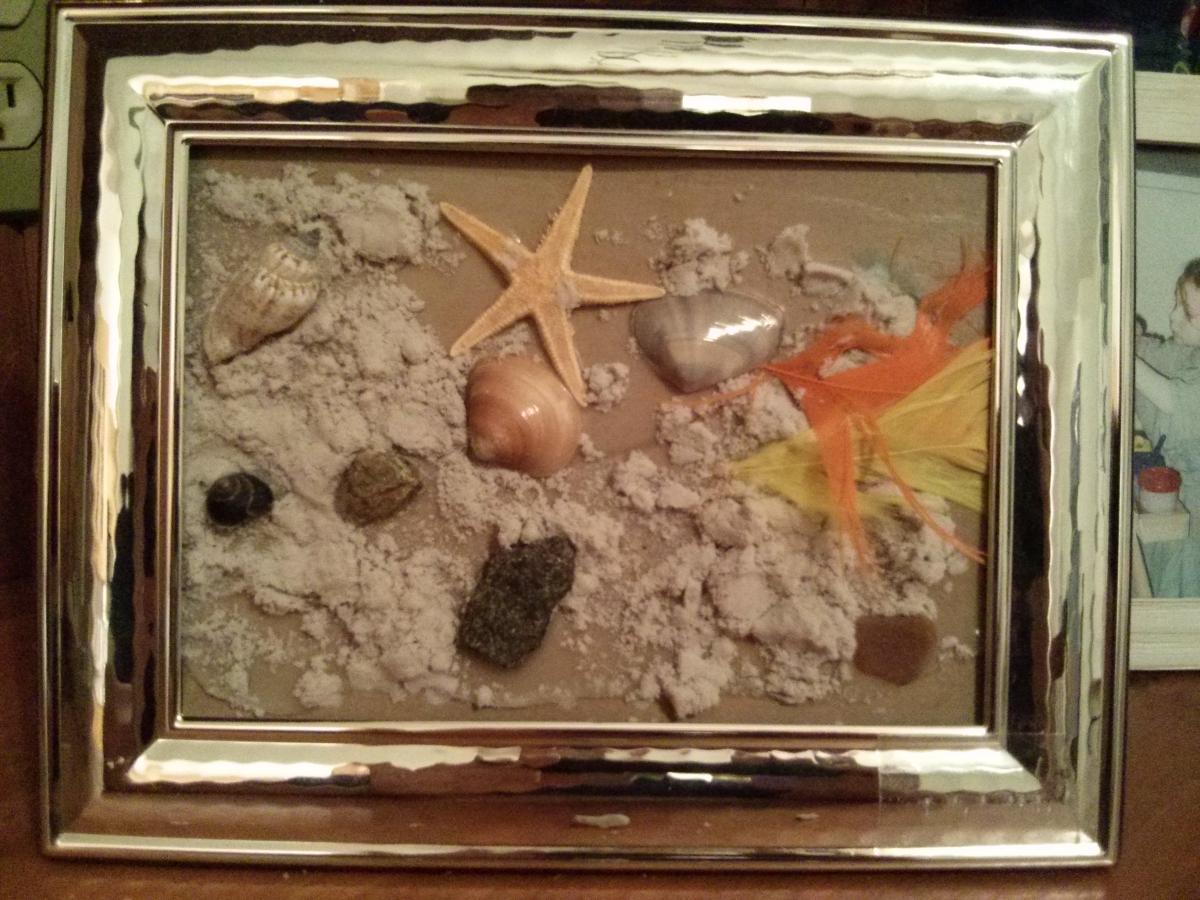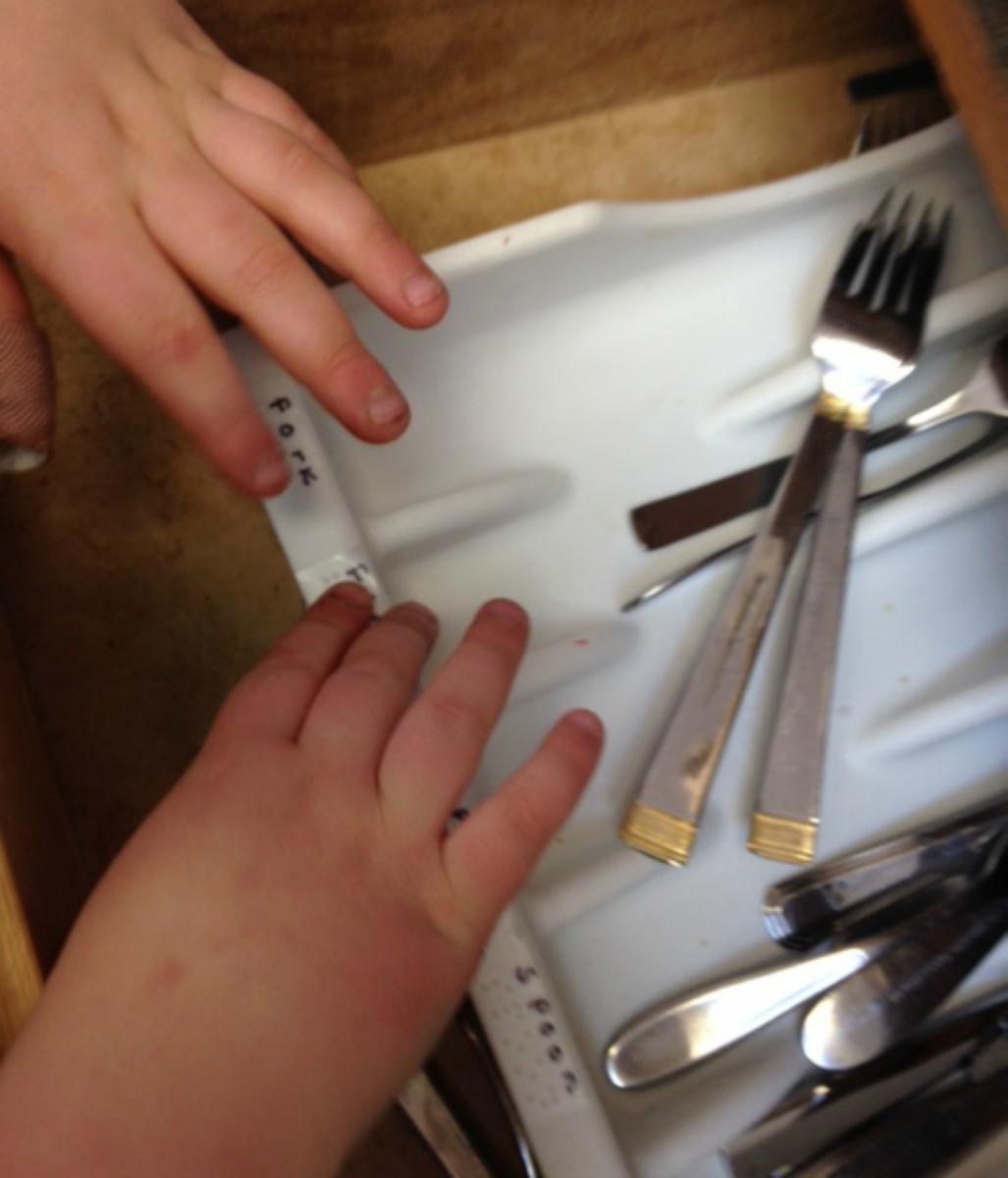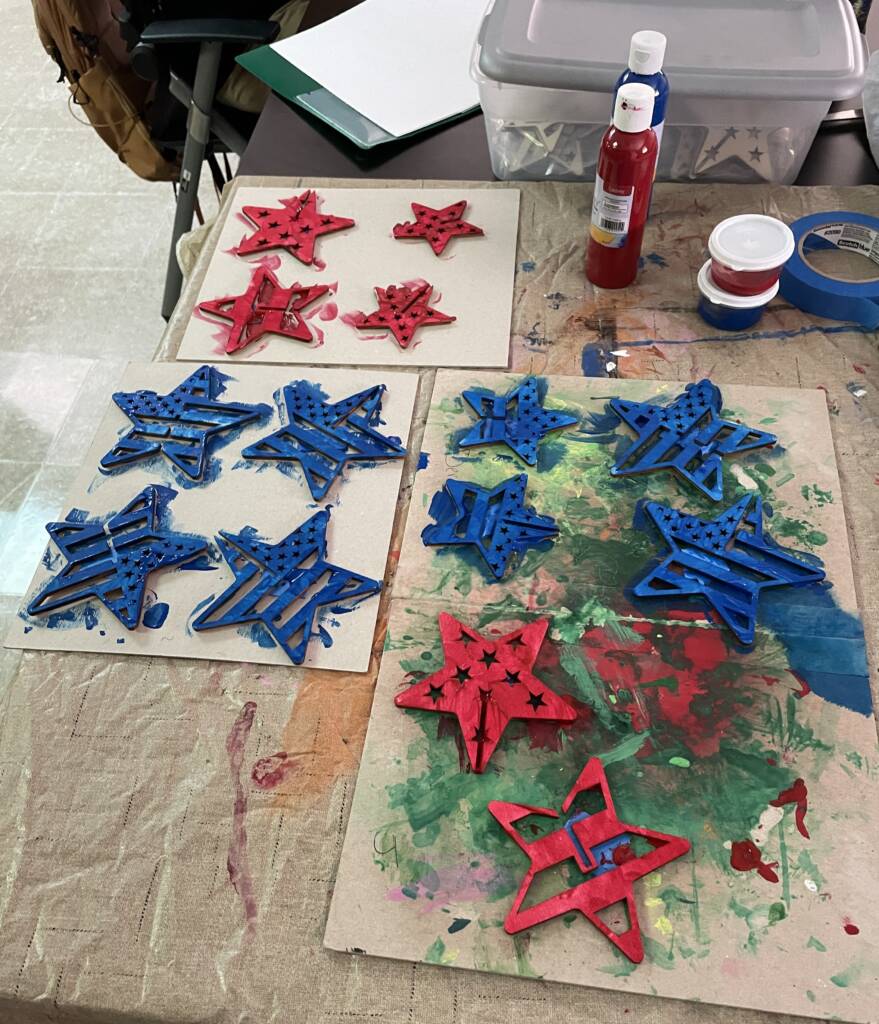 Considering the unique needs of our country at this time, we have been brainstorming ideas on how to provide some fun and educational activities to our students in PreK through Grade 3. The theme of the summer is Exploring the Expanded Core Curriculum.
Considering the unique needs of our country at this time, we have been brainstorming ideas on how to provide some fun and educational activities to our students in PreK through Grade 3. The theme of the summer is Exploring the Expanded Core Curriculum.
The Expanded Core Curriculum is a group of concepts and skills that may require specialized instruction for students who are blind or visually impaired. Starting at birth, students with visual impairments are taught these skills in order to compensate for incidental learning by observing others.
This summer, we hope you and your child will join us on our Expedition to Explore some of the areas of the Expanded Core Curriculum at your leisure. The goal is to expose and/or work on your child’s skills in these 9 areas as they are home for the summer months.
Follow the links below to some suggested activities to do with your child or implement at home to work on Expanded Core Curriculum Skills. As your child works on a skill, use the “Young Explorer Passport” to log progress this summer by placing a sticker on the designated page associated with the skill area.
You may see some activities crossover into 2 or more areas as a few of the activities cover more than one Expanded Core Curriculum skill. Feel free to place a sticker in both sections of your passport if this occurs.
Expanded Core Curriculum
Follow the clickable links below to be taken to activities and/or resources for you to explore.
LET THE ADVENTURE BEGIN!
Assistive Technology Amazon
Explore some audio described movies as a family.
- DCMP (Described and Captioned Media Program)
- Netflix
- Disney/Disney +;
- Some additional introductory Assistive Technology options for your child
- IOS and Apple Devices
Career Education Caves
Some of the career education activities focus on building functional skills through fun and play.
- Teaching responsibility through plant care, keep a log of when and how much to water, etc.
- Job awareness and beginning career discussions:
Some ideas below were pulled from a site called Edutopia, specifically an article called, Career Readiness: Starting Early With Young Learners.
Skills worked on with these activities are; talking on topic (efficiently and authentically), listening deeply, responding to others, asking questions, and posing follow-up comments or questions.
- Work with your child and their conversational skills. Children need to feel comfortable “in their own skin” and know about themselves. They should be able to hold a conversation with anyone (not just their friends and peers, but also adults). Modeling a conversation for them and pretending with them
- Incorporate the world of work into conversations with your child. Find examples of how history relates to current professions. Talk about how people can use math in everyday life — and what mathematicians do in finance or insurance, as engineers or in computer science. As you come across people in your community; postal worker, police officer, etc. talk about the “job” they do to contribute to society.
- Encourage your child to keep in touch with their friends from school over the summer if you can. Networking is the number one way that people get jobs.
- Give your child opportunities to interact verbally. They need to discuss topics with each you, with siblings, extended family members.
- Talk with your child about different jobs and ask them to choose a job they are interested in. As a family, you can do some research about it.
- Hold informal “mock interviews” with each other, stuffed animals, pets, siblings, etc.
- Have your child interview you about your job and other jobs people in your family have
Compensatory Skills Mountains
- Create your own story box: Have your child go around the house and pick out 3 or 4 favorite objects toys, and as a family create a story using these objects. Parents can scribe or child can write/braille the story.
- Take a family Field Trip and create your own Literacy Kits based on your adventure. See Literacy Kits Based on Family Field Trips.

- Choose some books online that have a live reader, or pick some favorite books in your own home library and read together;
“Reading aloud to children has been shown to improve reading, writing and communication skills, logical thinking and concentration, and general academic aptitude, as well as inspire a lifelong love of reading.” (Storyline Online)
Additional Resources:
- Sources for Free Braille Books
- Reading Aloud to Children with Visual Impairments
- Teaching Literacy Skills Through Grocery Shopping
Independent Living Skills Roaring Rapids
Independent Living Skills and the ECC
The following activities are suggestions on how to incorporate your child in some basic independent living skills at an early age.
-
Picking out clothes
This can be done before bedtime for the following day and placed out in the same place each day. This way when the child is ready to dress themselves more independently, they know where to locate the outfit to do so.
If your child is a bit older or has some basic skills in this area already, this activity can be expanded to orient the child to the drawers in their dresser. An even further expansion can be to label the drawers with pictures of what article of clothing is in the drawer or a brailled sticker label on the outside.
Once pajamas or day clothes are taken off, they should have a designated place to go instead of a pile in the middle of whatever room they are in. Provide a small clothes hamper, or even a corner of their room designated for this purpose that is always the same place. This will get your child into the habit of knowing that somthing needs to go in the laundry when it is dirty, i.e. “My role in getting it to the laundry is putting in this place.”
- Getting themselves dressed
This can be difficult with figuring out front and back of some clothing items, as some clothes now do not have traditional tags on them. Starting with orientation of the dresser can be helpful. This skill is different than getting themselves “dressed”, but will be a good piece of knowledge to have to build on other skills later on.
Starting with one article of clothing, such as socks or shoes that Velcro, may motivate your child to want to do more on their own. Modeling how to put on a coat or sweatshirt or using this cool technique may be helpful. My children loved this and were putting on their coats at 18 months by themselves. Putting on coat independently
-
Preparing breakfast or lunch
Helping to press labeled buttons on the toaster or spreading peanut butter or butter on toast is an easy way to get your child involved in the breakfast routine.
If your child has some skills already in this area, introducing cutting skills with a banana and a plastic fork and knife may be fun. Here are a few video choices for teaching how to cut a banana. You will see that there is a work tray and a designated work space and safety is key.
The Best Foods for Kids to Cut with a Sharp Knife
To help with pouring in the kitchen, there are smaller sized pitchers on the market that you can purchase, such as this child’s pitcher. Slow pouring with a small amount of liquid is a great way to work on this skill.
There are also some cereal holders that sit on your counter or in your pantry that a child can just turn a knob and the cereal is released. There are a few options and fancy features to choose from, but this one was basic cereal dispenser. Pretty cool stuff!
-
Preparing toothbrush and brushing teeth
You can have your child start by brushing themselves and can “supervise” as they brush. If your child is a beginning tooth brusher, then you may have to help model for them with a hand under hand approach.
After a set amount of time (you can set a timer), you get to take your turn to help make the germs go away. This can help teach and reinforce the simple skill of turn taking, as well as working together to accomplish the goal of clean teeth (or “fangs” as we refer to them) before bed.
If you do not have two older siblings to help your visually impaired child to get the toothpaste on their brush for them, there are cool things online that are automatic toothpaste dispensers that can attach by suction cup on the bathroom wall, such as this hands-free toothpaste dispenser.
-
Setting table or cleaning up the table after a meal
Just starting with having your child bring their plate/bowl to the counter after eating or placing their cup in the sink is a great place to start.
As your child gets older, they can then clear their plate in the trash, place their plate in the sink or dishwasher, or helping to put things away from the table such as ketchup, salt and pepper.
Setting the table can start as just placing napkins at each seat and as they get older they can then place forks and spoons. They can also place salad dressings, etc. and remove them at the end of the meal.

-
Putting away toys
Providing different shaped bins or textured bins/baskets to help your child identify what goes where can be a good strategy. Cars and trucks go in a plastic, square bins, stuffed animals in a cloth bin, etc.
For a child with a visual impairment, depending on the level of impairment, having designated play areas for toys that go together may be helpful as well from a cleaning up perspective.
When many young children have their mind set on playing with one particular playset, they will spend more time looking around the house for a specific character or action figure before they get down to “playing”. Imagine how frustrating it could be for a child with a visual impairment to not have all of the pieces or parts to a game or toy they want to play with in one place. Teaching your children from a young age to put one thing away before taking out another may be a good skill and something they will need more support with as they get older. The introduction of good organizational skills will help for sure.
-
Cleaning room – making bed and putting away laundry
After working on one of the skills above regarding getting dressed, this can be a great way to expand on that. You can have your child help to put away clothes away once they know what goes in what drawer.
When I say “make a bed” I am not looking for a tight tuck. This can simply look however you want or feel is a good start. This can simply be picking up stuffed animals that may have fallen off the bed in the night and putting them back up on the bed. It could be just pulling the blanket back up and smoothing it out. This is not a skill for perfection as we are talking about young children starting to get involved. Showing responsibility and taking pride in their personal space is a great skill to have.
This can also be something that they “help” you do as you model for them to begin and then give them more independence as they do it more on their own.
-
Getting bath ready, washing body and hair, putting on pajamas
This is a pretty easy one and you may already be doing this not even realizing it. I do not recommend having your child turn on the water as this may be a safety issue if the water comes out too hot. Also, children should never be left unattended in the bath. Instead, placing toys in the tub at the beginning of the bath time and removing them at the end is helping!
Some children are little fish and will stay in the tub all night if you allow them. You can have them help you set a timer before they get in and then give them a 2-minute warning before you start to drain the tub. Depending on the drain type you have, they can also help by doing this step for you.
While in the tub, teaching your child how to lather and wash body parts while naming them is a great way to build on body awareness and vocabulary for your younger children. You can lather your child’s hair to make sure it is clean and then hand under you can have them “help” you wash it more. This with give them a good model of how to wash properly to make sure they get nice and clean.
You can do this with a washcloth as well. Take turns washing their legs, feet, belly, back, arms, etc. You wash first and then you can hand over the washcloth and they can wash the same spot again.
This can build off of the picking out clothes activity above. You can have your child begin to help by picking out their own pajamas. Giving a choice of 2 pairs is a good place to start. This may not be a time of your day you want to provide choices which I totally get, but you can have your child help brush their hair after a tub which can be done hand under hand so that they are gentle and does not hurt themselves.
-
Putting away coats, shoes, backpacks, lunchboxes when entering the house
Designating a specific place for shoes, coats, etc. at home is a good way to teach your child early on an expectation of when they reach school age and it allows them to be more independent when you ask them to get ready to go somewhere.
Having a small coat rack at their eye level or a hook on the wall allows them to place their coat somewhere that they know they can go back to retrieve it when needed
The main takeaway for this is developing routines. Having the items in the same place or asking them to put their items in the same place will allow them to keep track of them and not need to ask where things are 45 times before leaving the house… which in turn can cut down on your stress level as well. : )
Additional Resources and Skills to Explore:
- Life Skills by Age – This is a general list for reference.
- Learning About Laundry
- Tying Shoelaces
- Independence in the Kitchen
- Loading the dishwasher – This may be for some older students.
- Clearing the table
Orientation and Mobility Outback
- Explore your child’s room, home, neighborhood, etc. and create a tactile map together.
- Practice navigating through a building or outside using directional terms, exploring new or less familiar environments
- Drawer orientation of dresser. This is an extension of an independent living skills activity shared. What goes where?
- Bird sounds
- Play the game Marco Polo in pool or around house/yard. Your child has to orient themselves to the sound of the people calling to them and recognize how far or close they may be to them to find.
Recreation and Leisure Glaciers
- Yoga with your child – What Is Yoga and How Can It Benefit My Child with a Visual Impairment?
- Create or modify an existing board game – Suggestions for Recreation and Leisure from Texas School for the Blind;
- In addition to using games that need no modifications, there are numerous adaptations that can be made to games that will allow children who are blind and visually impaired access to a wider range of recreation/leisure activities. Some of these adaptations are:
- Divide sections of game boards with glue, or various textures.
- Add braille labels to sections of game boards.
- Use velcro in sections of game boards and on bottoms of playing pieces.
- Braille the instructions and the game cards
- Tape record game instructions.
- Braille regular playing cards or game cards such as Uno.
- Use textures or glue to mark differences in game pieces.
- Add brightly colored stickers to game pieces and game sections.
- Mark dice with braille labels or glue dots.
- Make a Tic-Tac-Toe board with a cake pan and magnet strips.
- Divide checkerboard with glue and mark red playing pieces with texture.
- Play Tic-Tac-Toe with pegs and pegboard.
- Use a large box lid to define playing space.
- Keep score with peg boards, paper clips clipped to index cards or tokens dropped into a container.
Most of these ideas are for adapting commercially available games. Adapted games such as Scrabble, Bingo, Tic-Tac-Toe, Checkers, UNO and large print and braille playing cards are also available through distributors that you can inquire by reaching out to your student’s Teacher of Students with Visual Impairments. Be sure to reach out to them for additional games that are available.
Self-Determination Safari
At home: Learning to Ask for Help
- Request assistance on a task not related to the student’s vision impairment. Example: Parent asks a child to do an unfamiliar chore in the house, such as taking out the trash, or putting toys away but does not provide guidance on how to do it or where to put the trash or toys. Prompting or encouraging the child to ask for assistance or directions.
- Request assistance related to the student’s vision impairment. Example: Family member asks the child to do a task that is not readily accessible (i.e start the dishwasher when the buttons do not yet have bump dots. The child must ask for help in learning the buttons or in marking them for future accessibility.
Ideas to explore your child’s other senses this summer:
- Use play dough and cookie cutters. Rolling, cutting, pressing, squeezing the dough.
- Create frozen paint – Mix paint with water and add mixture to ice cube trays and freeze. When frozen, your child can use the frozen paint pops to paint on sidewalk outside or on paper indoors
- Auditory books – if you child has a Bookshare or Learning Ally account, download books and have them read aloud to you.
- More auditory books – a simple Google Videos or You Tube search of “children’s books” will result in a vast list of sites that you can find books that will be read aloud. Our favorite one to explore as a family is Storyline Online.
Ideas to spread some kindness to neighbors and the community over the summer months: 100 Acts of Kindness for Kids
- Take turns telling short stories or short pieces of information to each other.
Skills practiced with this activity include listening, following directions, taking turns, ignoring distractions, cooperating, and showing empathy.
Topics may include:
- an actual event that happened in your life
- facts about yourself (e.g., I love to dance. My favorite music to dance to is pop. I always wished I could be a famous dancer.)
- an idea you once had
- a dream you once had
- anything you and your child want to share with each other (real or imaginary)
If you think it would be necessary for your child, limit the story to five or ten sentences per turn or two to five minutes per turn (set a timer if you are setting time limits and your child has trouble with the concept of time).
Children who give too many details when sharing information or who have trouble staying on topic may benefit from this type of limit setting.
- After your child shares a story with you, show you were listening by summarizing what she said. Ask questions for clarification if need be and show empathy if it fits the story your child gave. For example, if your child told you she once fell down at camp, hurt her ankle, and couldn’t participate in the soccer game, show empathy with a statement such as “That must have been disappointing for you. You probably wanted to join in the soccer game with your teammates.”
When you tell a story to your child, have her practice these same skills: summarizing the story, asking questions for clarification, and showing empathy.
**Modification for younger children: you can play this game through telephone cups for some added fun.
**If you want to have your child practice ignoring distractions, play the game in an area where some distractions are present such as a busy park. Tell your child ahead of time that you will be playing this game at the park and you want her to practice focusing on the game and tuning out any distractions such as dogs, other children, and fun playground equipment.
Remind your child that when she is listening to the teacher at school he/she may have to ignore distractions. If your child becomes distracted while you are telling each other stories, use clear short directives to bring his/her attention back to you (e.g., ”Keep telling me your story,” “Look at me while I tell my story,” “Remember, you need to summarize the story when I am done,” etc.).
- You may want to have your child tell you her story first, so you can show her an example of how to summarize, ask questions for clarification, and make empathetic statements. When it is your turn to tell a story, you may need to remind your child to keep listening and help her summarize the story you tell, come up with clarifying questions and show empathy. As your child becomes more proficient in these skills, you can slowly fade out your guidance.





